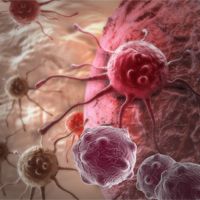Article
Combining Pain Medicine and Metal Ions to Fight Cancer
Author(s):
Potential alternatives to cisplatin have emerged in recent years, including non-platinum-based metal ion complexes. Studies have also shown that nonsteroidal anti-inflammatory drugs (NSAIDs) can fight certain cancers and improve the activity of other agents.

Swiss research indicates that combining pain medicine and metal ions appears to lead to new compounds that could destroy drug-resistant cells while leaving most normal cells untouched.
Â
Published in the January 29, 2016 issue of the American Chemical Society journal Inorganic Chemistry, the study builds upon prior research showing the two groups of compounds individually hold promise as anti-cancer agents as part of ongoing efforts to fight chemo-resistant cancer, which remains a major challenge that scientists are tackling from as many angles as possible.
Â
“Compounds that combine metal-based drugs with covalently linked targeted organic agents have been shown, in some instances, to exhibit superior anticancer properties compared to the individual counterparts,†wrote Paul J. Dyson, a professor for the Institute of Chemical Sciences and Engineering at the Ecole Polytechnique Fédérale de Lausanne in Switzerland, and colleagues.
Â
The use of metal ions in anti-cancer agents is nothing new. For example, cisplatin is a platinum-based therapy currently used to fight lung, ovarian, and other cancers. However, many patients develop resistance against the drug.
Â
Potential alternatives to cisplatin have emerged in recent years, thanks to recent advances that are pointing to new ways to destroy cancer cells, including metal complexes other than those that are platinum-based. Studies have also shown that nonsteroidal anti-inflammatory drugs (NSAIDs) can fight certain cancers and improve the activity of other agents.
Â
Â
“Compounds that combine metal-based drugs with covalently linked targeted organic agents have been shown, in some instances, to exhibit superior anticancer properties compared to the individual counterparts,†wrote the authors. “Within this framework, we prepared a series of organometallic ruthenium(II)- and osmium(II)-p-cymene complexes modified with the nonsteroidal anti-inflammatory drugs (NSAIDs) indomethacin and diclofenac.â€
Â
The team was determined to hopefully develop an effective combination. First, they created several NSAID-metal ion complexes, characterized their structures, and then tested the cancer-fighting potential of each in the lab.
Â
According to the investigators, some compounds were shown to be even more effective against ovarian cancer cells than cisplatin. Several were also significantly more toxic to cisplatin-resistant cells than to healthy cells, an important finding that could pave the road toward future agents with reduced side effects.
Â
“Bifunctional ruthenium(II)- and osmium(II)-p-cymene complexes modified with the nonsteroidal anti-inflammatory drugs indomethacin and diclofenac are shown to be highly cytotoxic, cancer cell-selective compounds that lack cisplatin acquired cross-resistance,†wrote Dyson and colleagues. “The nature of the ligands as well as the relative ratio between the two active units (ie, the metal fragment and the bioactive organic drug moiety), strongly influences the biological activity.â€
Â





















